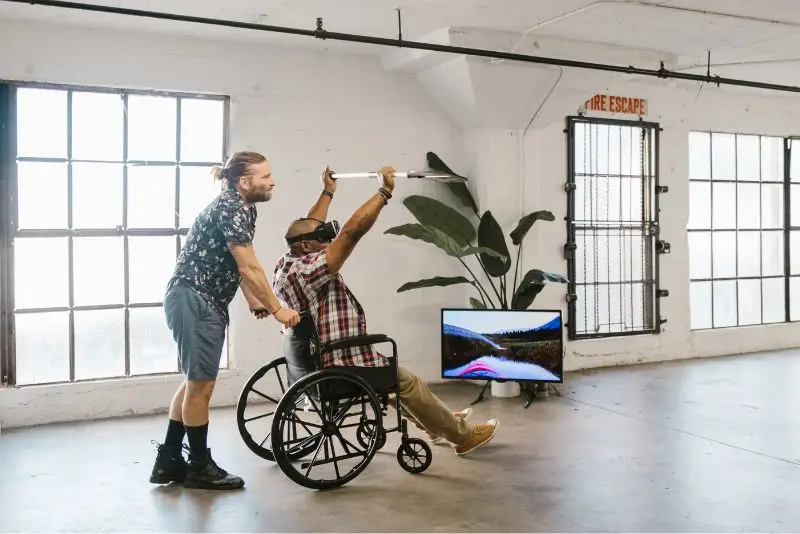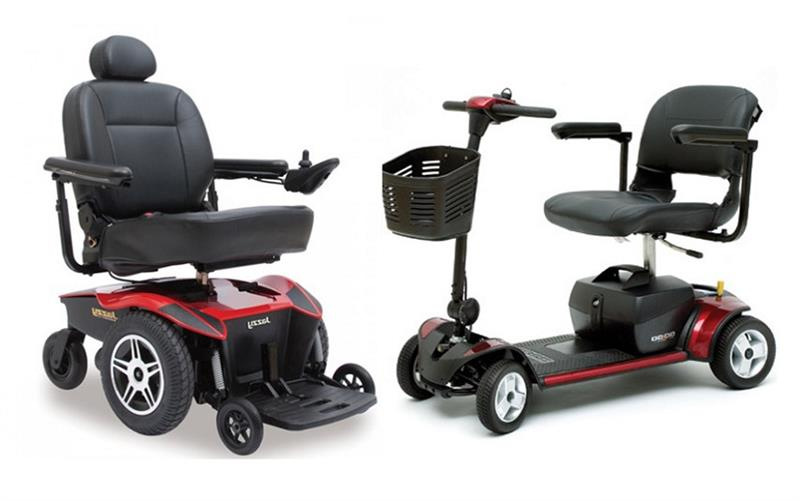Power Wheelchair Repair:
Power wheelchair repair provide essential mobility for individuals with physical disabilities. Like any other complex machinery, electric wheelchairs may require occasional maintenance and repairs to ensure they continue to function smoothly. Understanding the basics of electric wheelchair repair can help users address minor issues and maintain their independence. In this article, we will discuss common electric wheelchair problems and provide a guide to repairing them.
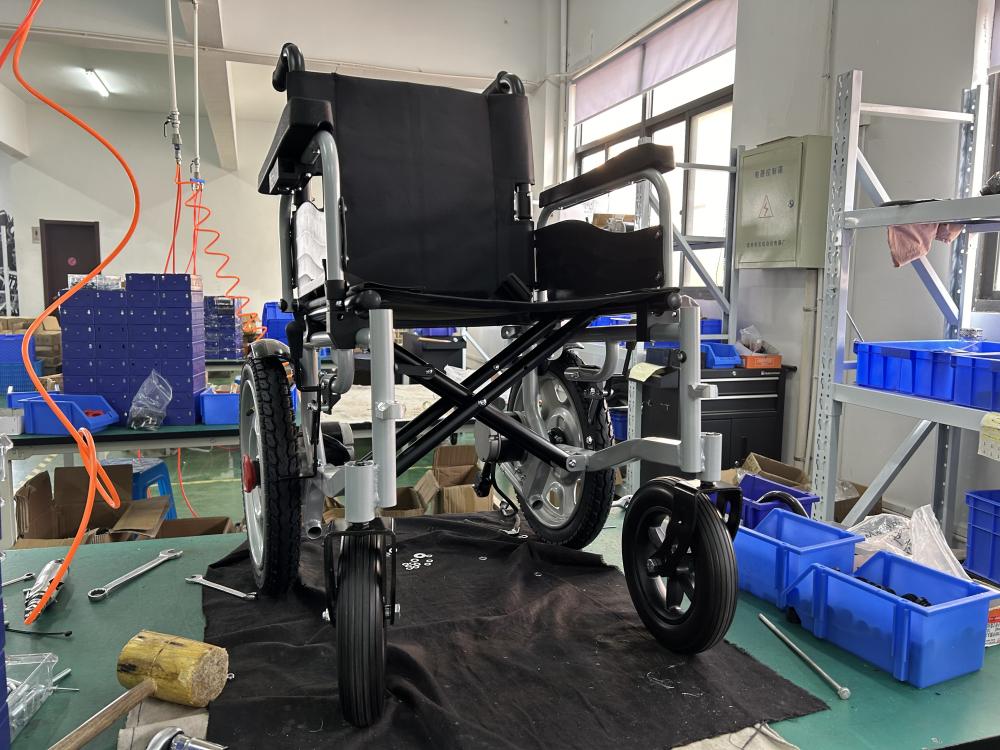
Diagnosing the Issue:
Before attempting any power wheelchair repairs, it’s crucial to accurately diagnose the problem. Common issues with folding electric wheelchairs include malfunctioning motors, damaged wheels, faulty batteries, and electrical wiring problems. Carefully observing the wheelchair’s behavior and listening for unusual sounds can help pinpoint the source of the issue.
Tools and Safety Precautions:
When power wheelchair repair, it’s important to use the right tools and follow safety precautions. Basic tools such as screwdrivers, wrenches, and multimeters may be necessary for troubleshooting and repairs. Additionally, always ensure that the wheelchair is turned off and the battery is disconnected before beginning any repair work to prevent electrical accidents.
Common Repairs:
1.Motor Troubleshooting: If the wheelchair’s motors are not functioning correctly, check for loose connections, damaged wiring, or worn-out motor brushes. Cleaning the motor and ensuring proper lubrication can also help resolve minor issues.
2.Wheel and Tire Replacement: Worn-out wheels or damaged tires can affect the wheelchair’s performance. Replacing these components when they show signs of wear can prevent further damage and improve maneuverability.
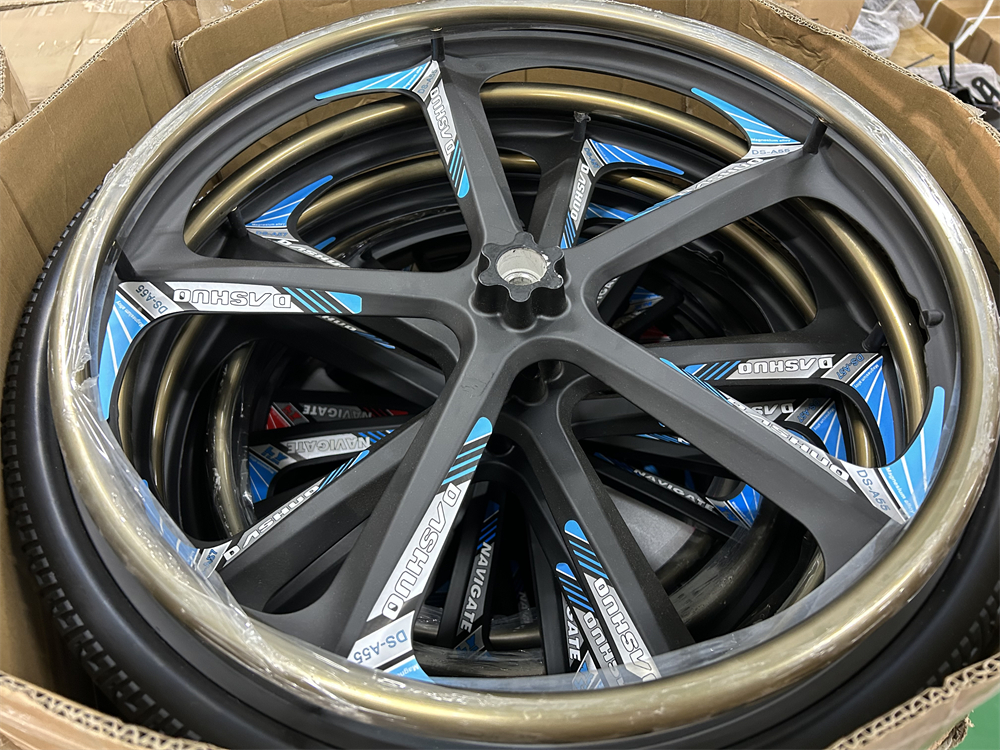
3.Battery Maintenance: Electric wheelchairs rely on rechargeable batteries for power. Regularly inspecting the batteries for corrosion, ensuring proper charging, and replacing old batteries can extend the wheelchair’s lifespan.
4.Electrical System Checks: Faulty wiring or damaged electrical components can cause various issues in electric wheelchairs. Carefully inspecting the wiring harness and control systems can help identify and resolve electrical problems.
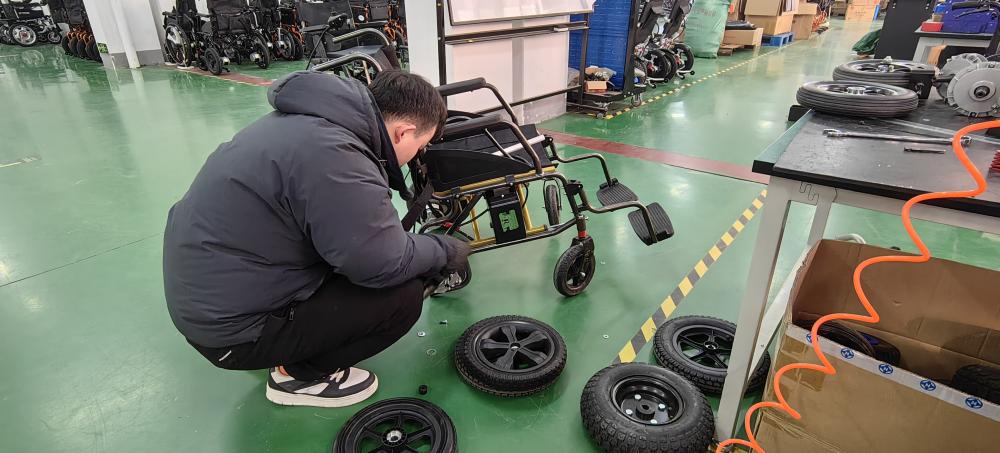
Seeking Professional Help:
While some power wheelchair repair can be performed independently, complex issues may require the expertise of a professional technician. It’s important to know when to seek professional assistance to ensure the wheelchair is repaired safely and effectively.
Conclusion:
Maintaining an electric wheelchair in good working condition is essential for the well-being and independence of its user. By understanding the basics of power wheelchair repair and following safety guidelines, individuals can address common issues and keep their mobility devices in optimal condition.
In addition to deal with power wheelchair repair, regular preventive maintenance is crucial for keeping electric wheelchairs in top condition. This includes cleaning the wheelchair regularly to prevent dirt and debris from affecting its components, checking the tire pressure, and inspecting the overall condition of the wheelchair for signs of wear or damage.
User Manual and Resources:
The user manual provided with the electric wheelchair is a valuable resource for troubleshooting and basic repairs. It often contains essential information about the wheelchair’s components, maintenance guidelines, and troubleshooting tips. Users should familiarize themselves with the manual and keep it easily accessible for reference.
Additionally, manufacturers and dealers may offer online resources, instructional videos, or customer support services to assist with repairs and maintenance. Taking advantage of these resources can provide valuable guidance for addressing specific issues and ensuring proper care of the power wheelchair repair.
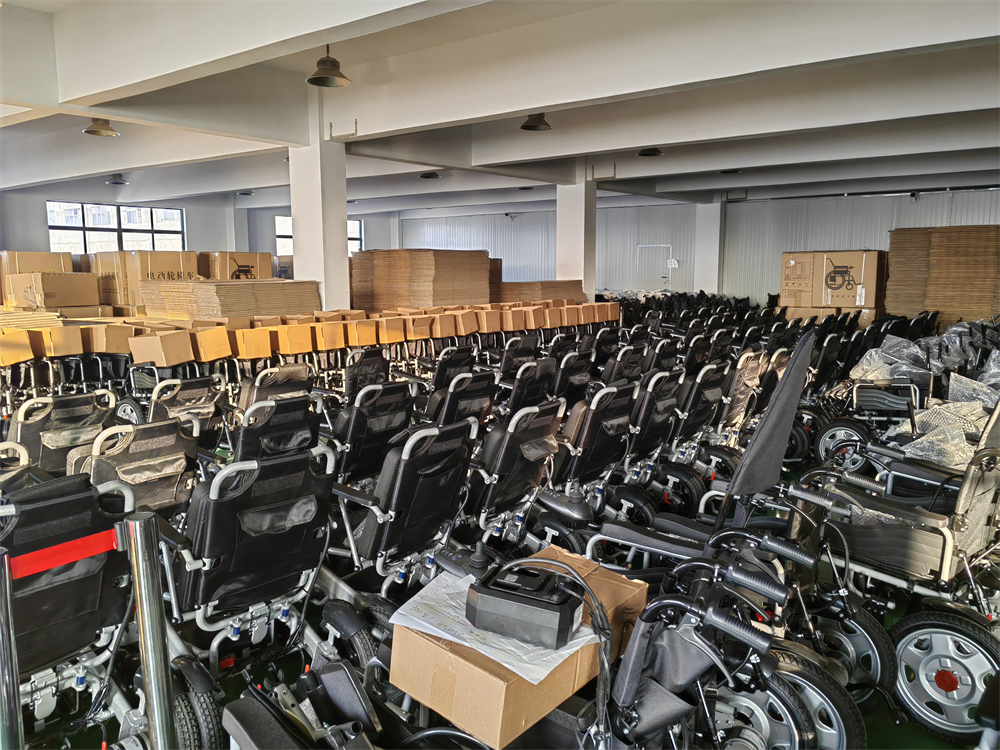
Community Support and Peer Networks:
Joining support groups or online communities for individuals using electric wheelchairs can be beneficial for sharing experiences, seeking advice, and learning from others’ repair and maintenance practices. These communities often provide a platform for users to exchange tips, recommendations, and practical solutions for common issues related to power wheelchair repair.
Empowerment through Knowledge:
Understanding how to perform basic power wheelchair repair and maintenance empowers electric wheelchair users to take control of their mobility and reduces dependency on external assistance for minor issues. By learning about the inner workings of their wheelchairs and gaining confidence in addressing common problems, users can enhance their overall mobility experience and sense of self-reliance.
In conclusion, being proactive about electric wheelchair maintenance and repairs can contribute to the longevity and reliability of these essential mobility aids. By staying informed, accessing available resources, and taking a hands-on approach to care and maintenance, users can ensure that their electric wheelchairs continue to serve them well for years to come.
Environmental Considerations:
It’s important to consider the impact of environmental factors on power wheelchair repair. Exposure to moisture, extreme temperatures, and rough terrain can accelerate wear and tear on the wheelchair’s components. When using the wheelchair outdoors, users should take precautions to protect it from adverse weather conditions and be mindful of the terrain to prevent unnecessary strain on the wheelchair.
Financial Planning for Repairs:
Repairing electric wheelchairs may involve costs for replacement parts, professional services, or specialized tools. Users should consider budgeting for potential repairs and maintenance to ensure that they can promptly address any issues that arise. Some insurance plans or assistance programs may offer coverage for wheelchair repairs, so it’s advisable to explore available options for financial support.
Regular Inspections and Testing:
In addition to addressing specific issues, regular inspections and testing can help identify potential problems before they escalate. Periodically checking the wheelchair’s functionality, responsiveness, and overall condition can help preemptively address minor issues and prevent more significant problems from developing.
Empathy and Understanding:
For caregivers, family members, and healthcare professionals, developing an understanding of electric wheelchair repair and maintenance can foster empathy and support for wheelchair users. Being knowledgeable about the challenges and needs related to wheelchair maintenance can contribute to a more supportive and inclusive environment for individuals relying on electric wheelchairs.
The article provides a comprehensive guide to repairing and maintaining electric wheelchairs. If there are specific topics you’d like to delve into further or if you have any other specific requests, feel free to let me know!

